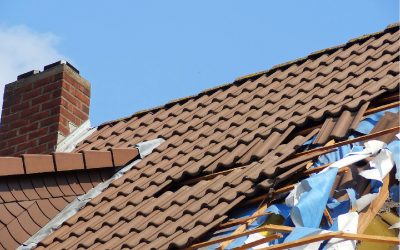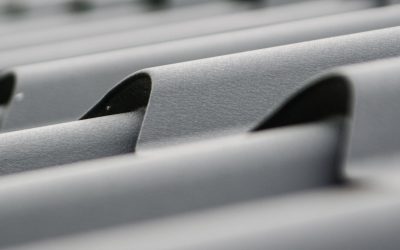Your roof is one of the most important parts of your home. It provides protection for you, the rest of your house, and anyone inside it. But, from time to time a roof may start to leak. Leaking leads to water damage and can ruin your roof and other parts of your house. Roofs are meant to last anywhere from 20 to 50 years, depending on the roofing materials used, but that doesn’t always mean they will. Some things that can cause a roof to begin leaking include improper installation, a bad storm or high winds, and age. There are many common signs that your roof might have damage. Our roofing experts outlined common signs of roofing damage in a previous post which you can find here.
Water Damage
If you live in a climate where rain and snow are common, water damage is going to be a concern for you if your roof is leaking. Water can cause issues with your roof and ceiling. In fact, it can cause a wide variety of issues. But, what exactly are those issues? Our roofing experts have compiled a list of some of the most common effects that water damage can have. It’s important to keep in mind that water damage can effect your roof and your entire home.
Attic & Ceiling Damage & Discoloration
When water begins to seep into your home, the first place it will likely end up is your attic and/or ceiling. With prolonged exposure to water, the wood in your attic or ceiling can start to weaken and discolor. The discoloration is caused by the water coming from outside of your home transferring dirt, dust, and other particulates inside.
Structural Integrity Issues & Drywall Damage
As your attic or ceiling start to get wet, the wood will begin to weaken. Water can also travel beyond the initial area where it is leaking and reach your walls. After the wood is exposed to water it will most likely dry, get wet, and dry again. This happening over and over can start to reduce the integrity of the wood.
After the wood in your home becomes saturated the water typically makes its way to your walls. Drywall is not meant for long-term exposure to water. As it is exposed to more water the sheet rock will begin to expand and weaken. Both the wood in your walls and the drywall can also experience discoloration depending on how far the material is from the leak.
Mold & Mildew
When water is inside your walls, you usually don’t clean it up or even know that it is there. That means that it will take longer for that water to dry up. It can even take days or weeks. Wood and/or drywall that has been soaked with water for days or weeks is the perfect breeding ground for mold & mildew. Occasionally mold or mildew will show up on the part of your drywall that you can see. However, most of the time it appears inside the walls for a long time before you ever see it. Mold can cause many different health issues and requires thorough cleaning to remove all signs of it from a structure.
Increased Utility Bills & Ineffective Insulation
If your roof is leaking water, that means there are holes somewhere on your roof. Holes in you roof allow things like water into your home. But, they also allow things like warm or cold air out. That can cause an increase in your utility bills. And, as the water gets into your house it can start to saturate your insulation. Wet insulation is ineffective at performing its job. Ineffective insulation means your heater or air conditioner will run longer in order to maintain a comfortable temperature.
Electrical Damage & Fire Hazards
Water and electricity don’t mix and as your roof begins to leak and allow water inside your home, that water may find its way to your electrical wires. Once the water comes into contact with anything that uses electricity shorting the device out becomes a possibility. Shorting the device out would require the device to be replaced. As the water starts to comprise the electrical components of your home you have an increased risk of causing an electrical fire.
Insurance Issues
Many insurance policies cover roofs because a roof is so important to the overall health of your home. But, if you have leaks that haven’t been managed, its a possibility that your homeowners insurance policy will not cover the damage. If your leaky roof was caused by a single event (like a storm), you should start the roof insurance claim process immediately. Click here for more information on the roofing insurance claim process.
Increased Financial Liability
We’ve covered a range of different things that can be the direct result of a leaky roof. However, it’s important to note that not all of these things may happen because of a small leak. If there is a small leak, though, getting it fixed or replacing your roof can prevent a lot more damage down the road.
Your Mid-Missouri Roofing Experts
Our roofing experts are ready to help you in any way we can. For more information or to get your risk-free quote, give us a call at (573) 567-3177. You can also contact us through our simple to use online contact form by clicking here.





